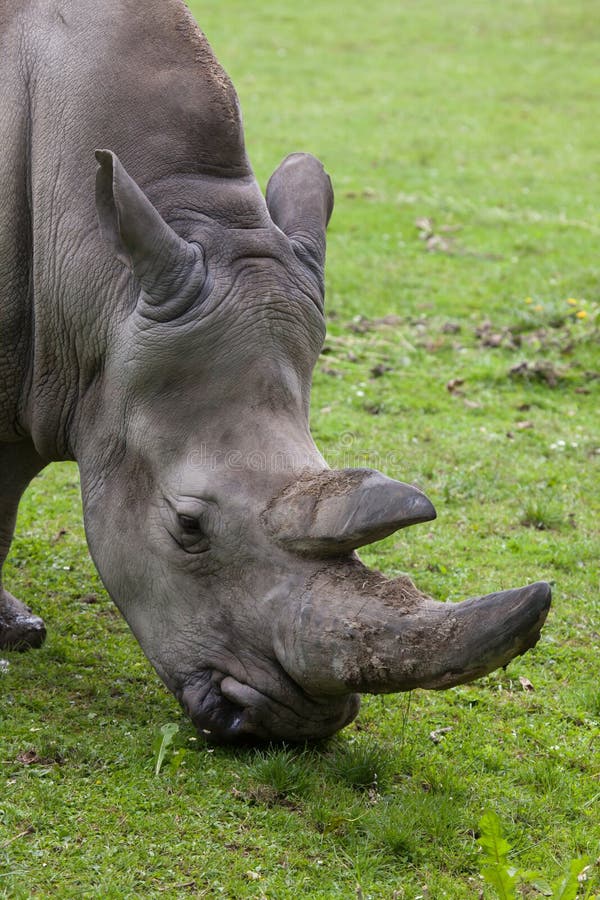
Illegal killings reached a peak of more than 1,200 in 2014 and a drought the next year has left the Kruger National Park, where the bulk of South Africa’s rhinos live, with only 3,549 white rhinos, according to the 2020 annual report of South African National Parks. The remaining population, two females, resides at Ol Pejeta Conservancy in Kenya. At Platinum Rhino the animals roam the ranch and are given additional food. The northern white rhino is virtually extinct. Otherwise it will go extinct if it’s under so much stress. The northern white rhinoceros formerly inhabited South Sudan and adjacent areas of Uganda and the Democratic Republic of the Congo, with its range extending westward into the Central African Republic. The rhinos are southern white rhino, one of two subspecies. It has two distinct subspecies, but only populations of the southern white rhino (Ceratotherium simum simum) remain viable. Aside from living in different parts of Africa, they differ slightly in. Although critical to the conservation of white rhinoceros, captive breeding has proven challenging because of the poor and irregular reproductive health of. “To save the species you need to breed it. Appearance Southern white rhinoceros are the largest rhinos and are the second largest animals on Earth after the elephant. The southern white rhino and northern white rhino are subspecies of the white rhino. “The project needs a new custodian to take over, someone who’s got the vision and the same passion,” said Tammy Hume, a spokeswoman for Platinum Rhino, where about 100 rhinos are born every year. Today the biggest difference between the two is that the southern white rhino population is thriving, at least by rhino standards. The trade is banned as its use in East Asia for alleged cancer cures and virility boosters has led to an illicit market that has caused rampant poaching. Southern white rhinos lived in the open savannah. John Hume, the owner of the ranch, failed in his attempts to legalize the trade in rhino horns - which can be sawn off live rhinos and grow back - rendering the project too costly to keep running, the company said. Aside from living in different parts of Africa, they differ slightly in the shape of their teeth. Northern white rhinos were formerly found in several countries in east and central. Southern white rhinos could one day even be used as surrogate mothers for northern white rhino embryos.The sale of the 2,000 endangered rhinos, equipment and the land at the Platinum Rhino Project, which is about 155 kilometers (96 miles) southwest of Johannesburg, comes as South Africa fights to protect rhinos in its nature reserves against illegal hunters who have decimated the wild population. The southern white rhino and northern white rhino are subspecies of the white rhino. Southern white rhinos live almost exclusively in the country of South Africa. The zoo said that once the processes of artificial insemination, in vitro fertilization and embryo transfer are perfected on southern white rhinos, they could be used on other endangered species. The northern and southern white rhinos are distinct subspecies, but a study published last year in the journal Proceedings of the Royal Society B has revealed that the two subspecies are closer than previously thought. Glimmer of hope in race to save nearly extinct northern white rhino


AFP / Tony KARUMBA (Photo credit should read TONY KARUMBA/AFP/Getty Images) TONY KARUMBA/AFP/AFP/Getty Images Diet: Rhinoceros are herbivores and graze mostly on grass. According to the International Union for Conservation of Nature (IUCN), at the African Black market, rhino horn sells for up to 60,000 USD (57,000 euros) per kilogram - more than gold or cocaine - and in the last eight years alone roughly a quarter of the world population has been killed in South Africa, home to 80 percent of the remaining animals. Description: The Southern White Rhinoceros has a thick grey hide and two long horns on its snout. A caregiver calms Sudan, the last known male of the northern white rhinoceros subspecies, on December 5, 2016, at the Ol Pejeta conservancy in Laikipia County - at the foot of Mount Kenya - that is home to the planet's last-three northern white rhinoceros.Īs 2016 draws to an end, awareness of the devastation of poaching is greater than ever and countries have turned to high-tech warfare - drones, night-goggles and automatic weapons - to stop increasingly armed poachers.


 0 kommentar(er)
0 kommentar(er)
